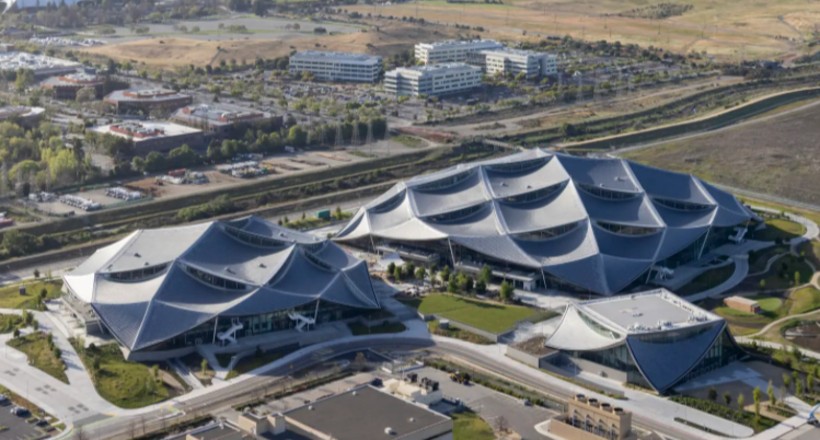Cityscape: Global BIG Champions Sustainable Design in California

The Concept of Hedonistic Sustainability
Hedonistic sustainability is a fresh and appealing way to describe sustainable design. It suggests that sustainability doesn’t have to be about unattractive solar panel installations or sacrifices in aesthetics. Instead, it highlights how sustainable elements and essential infrastructure can solve practical problems while also providing visible and experiential pleasure.
This concept was introduced by Bjarke Ingels, the Danish architect and founder of the global firm Bjarke Ingels Group (BIG). With over 700 employees and offices in cities like Barcelona, Oslo, Copenhagen, London, New York, Shanghai, Zurich, and Los Angeles, BIG has become a leading force in innovative architecture. In San Diego, BIG partner Leon Rost recently opened an outpost with 20 employees, bringing the firm’s vision closer to local communities.
Rost will be giving a lecture at Casa Del Prado in Balboa Park, discussing the hedonistic potential of designs related to fire containment, flood control, and solar power. He will also explore how vibrant, human-friendly design can be integrated into college campuses, corporate buildings, urban neighborhoods, and other spaces.
In San Diego, BIG has been involved in several significant projects, including a major initiative at UC San Diego. While Rost hasn’t revealed specific details, he has shared some strong ideas about how the campus could become more inviting and connected to its surroundings. The project aims to make the campus more livable and accessible as it continues to grow in size and density.
Big Projects on the West Coast
BIG's work extends beyond San Diego, with many of their designs located on or near the West Coast. These include the new Athletics ballpark, Google’s Bay View campus in Silicon Valley, and a new sciences building at Claremont McKenna College.
Google’s Bay View campus, which opened in 2022, is a prime example of hedonistic sustainability. The campus features sculptural "dragonscale" roofs made up of 90,000 solar panels arranged to define the curved lines of the building. These panels generate seven megawatts of power, meeting 40% of the campus’s energy needs. Google and Alphabet CEO Sundar Pichai has praised the design, calling it a statement that building solar roofs can be both functional and aesthetically impressive.
In New York, BIG applied its hedonistic sensibilities to address the issue of flood control after winning the Rebuild by Design competition. Their solution involved a system of barriers and flip-up floodgates to protect Manhattan from future flooding. This project, known as the Dryline, incorporates greenspace, pedestrian and bicycle paths, and landscaped areas to create attractive public spaces along the East River.
Leon Rost: A Visionary Architect
Leon Rost, who is 42 years old, grew up in Japan and the San Francisco Bay Area. He earned his architecture degree at Cal Poly San Luis Obispo and began his career in Europe, Japan, and New York, where he joined BIG in 2011. Rost feels a deep connection to California and believes that his international experience can help address the challenges faced by the state and its cities.
“I believe in the state,” Rost said. “I’ve learned a lot from working abroad, and I feel I have something to offer, to be able to leverage the great design thinking that is emerging around the world and adapt it to California sensibilities.”
Rost is currently thinking about how UCSD can become a more inviting place for students, faculty, and visitors. He envisions the campus as having an urban heart that connects it with the surrounding community. He believes that the campus, which spans 2,178 acres, has the potential to be as vibrant as Balboa Park, but faces challenges in terms of parking and accessibility.
Embracing Micro Transportation
To address these challenges, Rost advocates for embracing various forms of micro transportation, such as e-bikes and scooters. While there have been concerns about safety and sidewalk clutter, Rost argues that the problem lies not with the scooters themselves, but with cities not adapting quickly enough to accommodate them.
Rost cites the Robert Day Sciences Center at Claremont McKenna College as an example of the kind of urban heart needed at UCSD. This building combines three different sciences into one space and includes an indoor plaza that serves as a public area for students and the community.
Fire Prevention and Urban Development
In Los Angeles, following the devastating Palisades and Altadena fires early this year, BIG is leading the Breakline initiative to prevent future flaming disasters. This project involves creating a physical firebreak along the edges of cities, particularly in wildlife interface zones. The goal is to transform these areas into linear parks that offer recreational opportunities like mountain biking, farming, and hiking in a less flammable landscape.
Although the Breakline is still in the early stages of discussion among experts, officials, and stakeholders, Rost remains optimistic. He believes that a compelling vision with hedonistic appeal can gain support and funding.
In California, Rost emphasizes that the championing of sustainability is something he hasn't seen anywhere else. He sees opportunities for architects to demonstrate that new infrastructure doesn't have to be a sacrifice or a burden. If done right, sustainable design can play a big role in making cities more livable and inviting.
Post a Comment for "Cityscape: Global BIG Champions Sustainable Design in California"
Post a Comment